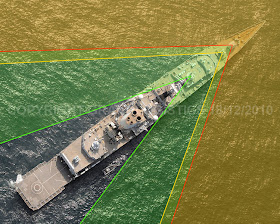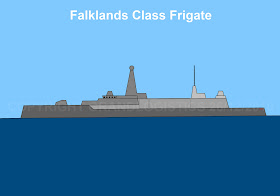Since the recent Strategic Defence and Security Review the subject of bases for combat aircraft has been in the news a great deal.
It has been announced that some bases are to close and local communities are rallying round to protect their own flying stations.
Here we shall consider how many bases British combat aircraft require and where they should be located.
First let us look at the current situation.
The above map shows the locations of Royal Air Force bases in the United Kingdom.
Flying stations are shown in red.
Note the cluster of bases in the South East which is a legacy of the Second World War.
Note the cluster of bases in the South East which is a legacy of the Second World War.
This map can be looked at in more detail by clicking on the bases at this link.
Harriers were at one time relocating from Wittering to Cottesmore but both bases are now likely to close folowing the Strategic Defence and Security review.
Marham and Lossiemouth are the current bases for the Tornado G.R.4 fleet.
It is expected that at least one of these bases will close.
Typhoons are currently stationed at Coningsby and Leuchars.
There have recently been some questions over the future of the base at Leuchars.
Under current plans,over the next decade the Royal Air Force will receive 160 new Typhoons and 96 refurbished Tornados for a total fleet of 256 aircraft.
This reduction in aircraft numbers has reduced the number of bases which are required.
There are a number of factors to be considered regarding the number and location of air bases.
As all potential basing options for British combat aircraft are on existing established air bases we need not address many of those factors here.
For example,if we were choosing a greenfield site,we would have to be certain that there was space for an adequately long runway,but that is not a factor when we are considering the use of existing airfields with existing runways.
We shall confine this discussion to cost effectiveness,redundancy,and time to intercept.
The most cost effective basing option is to have all combat aircraft at a single location.
However,that would require a base far larger than any currently available,most current bases are built to accommodate a wing of several squadrons.
It would also leave no redundancy.
Redundancy is important as an airfield can be closed by a number of factors such as weather,engineering work or enemy action.
Maximising redundancy would entail having small numbers of aircraft dispersed amongst a large number of air bases but this would be very expensive.
Another important factor is the need to police British air space.
Distance is a critical factor in air combat.
Close bases increase both the combat effectiveness and cost effectiveness of air assets.
In air defence operations a shorter distance from the base to the operating area results in shorter time to intercept and longer time on station.
It also reduces the number of aircraft required to maintain a constant patrol and the amount of tanker aircraft which are needed.
Therefore,it is desirable to have a number of bases distributed about the country for air defence purposes.
What is needed for financial reasons is the practical minimum number of air bases.
There are a number of factors to be considered regarding the number and location of air bases.
As all potential basing options for British combat aircraft are on existing established air bases we need not address many of those factors here.
For example,if we were choosing a greenfield site,we would have to be certain that there was space for an adequately long runway,but that is not a factor when we are considering the use of existing airfields with existing runways.
We shall confine this discussion to cost effectiveness,redundancy,and time to intercept.
The most cost effective basing option is to have all combat aircraft at a single location.
However,that would require a base far larger than any currently available,most current bases are built to accommodate a wing of several squadrons.
It would also leave no redundancy.
Redundancy is important as an airfield can be closed by a number of factors such as weather,engineering work or enemy action.
Maximising redundancy would entail having small numbers of aircraft dispersed amongst a large number of air bases but this would be very expensive.
Another important factor is the need to police British air space.
Distance is a critical factor in air combat.
Close bases increase both the combat effectiveness and cost effectiveness of air assets.
In air defence operations a shorter distance from the base to the operating area results in shorter time to intercept and longer time on station.
It also reduces the number of aircraft required to maintain a constant patrol and the amount of tanker aircraft which are needed.
Therefore,it is desirable to have a number of bases distributed about the country for air defence purposes.
What is needed for financial reasons is the practical minimum number of air bases.
That number must allow an adequate degree of redundancy.
At present there is a cluster of 4 bases in the East of England and another 2 bases in Scotland.
There are no combat aircraft stationed in the South or West of the United Kingdom.
The South West of England has no air defences at all.
This leaves the Royal Navy's bases open to attack from cruise missile firing submarines.
This leaves the Royal Navy's bases open to attack from cruise missile firing submarines.
Aircraft which will operate on the future Queen Elizabeth class aircraft carriers are expected to be based in Scotland,far from the ships they will fly from.
The current situation is clearly unsatisfactory.
The current number of 6 airfields is far more than the future 3 wing combat aircraft fleet will require.
There is excessive redundancy in the East of England.
There is no base to provide air defence to the South West.
There is no nearby base to support the South coast based aircraft carriers.
The above map also shows the two former Nimrod bases at St.Mawgan and Kinloss and the former Sea Harrier base at Yeovilton.
Kinloss and St.Mawgan were both considered as bases for the F35C Lightning II.
All three of these bases could accommodate combat aircraft.
The bases in the South West would allow carrier capable F35Cs to be based near to the aircraft carriers they will fly from.
They would also allow provision of air defence in this area.
In addition,given the often significant disparity in weather between the South West and other parts of the country,they would provide useful divert locations for combat aircraft from other areas.
There is currently some uncertainty about the future of the former Nimrod base at St.Mawgan.
It's runway has been given over to civilian use.
However,the former Sea Harrier base at Yeovilton has a secure future as a Helicopter base and consequently,basing F35s there would be highly cost effective as it would allow an additional air base to be closed.
St.Mawgan is positioned furthest West which is useful for air defence operations,though the threat from this direction is very low at present.
There is clearly a need for a fast jet base in the East of England and another in Scotland.
It is difficult to see any justification for more than a single combat aircraft base in each of these areas in future.
Either Cottesmore,Coningsby,Wittering or Marham could provide the East of England air base for a wing of Typhoons.
Only one of those bases would be required,the most appropriate being retained and the other 3 bases can then be closed.
As a current Typhoon base,Coningsby appears the most likely to be retained.
In Scotland,Leuchars,Lossiemouth and the recently ex-Nimrod base at Kinloss are all potential combat aircraft bases.
Lossiemouth and Kinloss have the advantage of being further North which is beneficial for air defence purposes given the direction of likely threats from Russia.
Kinloss was intended as a base for the F35C Lightning II.
Leuchars is already a base for Typhoon aircraft.
By retaining a single Scottish site for Typhoon aircraft we can close the other 2 of these bases.
By retaining a single combat aircraft base in the South West,East and North,Britain can retain adequate redundancy and air defence coverage.
Retaining these 3 bases will allow the closure of 6 other bases including the 2 former Nimrod bases.
This will result in significant long term cost savings.
The even distribution of bases around the country provides significant redundancy and ensures that aircraft can be based close to where they are needed for air defence purposes.
Kinloss and St.Mawgan were both considered as bases for the F35C Lightning II.
All three of these bases could accommodate combat aircraft.
The bases in the South West would allow carrier capable F35Cs to be based near to the aircraft carriers they will fly from.
They would also allow provision of air defence in this area.
In addition,given the often significant disparity in weather between the South West and other parts of the country,they would provide useful divert locations for combat aircraft from other areas.
There is currently some uncertainty about the future of the former Nimrod base at St.Mawgan.
It's runway has been given over to civilian use.
However,the former Sea Harrier base at Yeovilton has a secure future as a Helicopter base and consequently,basing F35s there would be highly cost effective as it would allow an additional air base to be closed.
St.Mawgan is positioned furthest West which is useful for air defence operations,though the threat from this direction is very low at present.
There is clearly a need for a fast jet base in the East of England and another in Scotland.
It is difficult to see any justification for more than a single combat aircraft base in each of these areas in future.
Either Cottesmore,Coningsby,Wittering or Marham could provide the East of England air base for a wing of Typhoons.
Only one of those bases would be required,the most appropriate being retained and the other 3 bases can then be closed.
As a current Typhoon base,Coningsby appears the most likely to be retained.
In Scotland,Leuchars,Lossiemouth and the recently ex-Nimrod base at Kinloss are all potential combat aircraft bases.
Lossiemouth and Kinloss have the advantage of being further North which is beneficial for air defence purposes given the direction of likely threats from Russia.
Kinloss was intended as a base for the F35C Lightning II.
Leuchars is already a base for Typhoon aircraft.
By retaining a single Scottish site for Typhoon aircraft we can close the other 2 of these bases.
By retaining a single combat aircraft base in the South West,East and North,Britain can retain adequate redundancy and air defence coverage.
Retaining these 3 bases will allow the closure of 6 other bases including the 2 former Nimrod bases.
This will result in significant long term cost savings.
The even distribution of bases around the country provides significant redundancy and ensures that aircraft can be based close to where they are needed for air defence purposes.











































